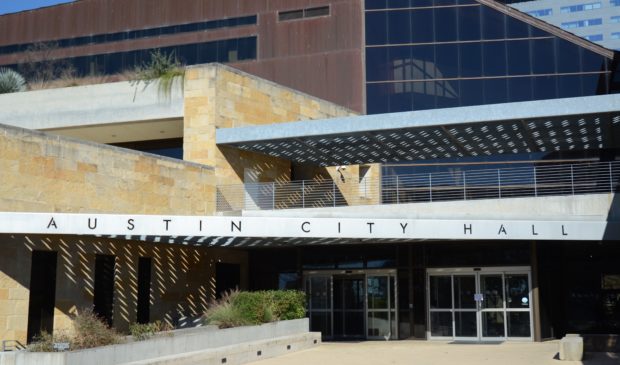City employee pay raises an open question
Thursday, May 4, 2017 by
Jo Clifton Studies, both nationwide and in Texas, project a 3 percent increase in salaries this year, including wages for public employees, according to data presented to City Council during Wednesday’s budget work session.
Last year, all city employees got a wage hike of 29 cents per hour, and all but fewer than 30 of the city’s more than 12,000 employees also got a 2 percent increase, according to Human Resources Director Joya Hayes. That 2 percent increase was called “pay for performance,” but Mayor Steve Adler disputed the idea that such a widespread raise should be called that.
A 2 or 3 percent increase won’t be easy to do this year, in light of the many other things Council has already indicated it wants to cover in next year’s budget, said Deputy Chief Financial Officer Ed Van Eenoo following Wednesday’s budget session.
“We’ve included in our financial forecast a guesstimate, a placeholder,” for salaries and wages, he said, but financial planners don’t know what the numbers are going to be.
“We’re projecting a $2 million deficit and we know that Council also has over $20 million of (new) things they want to pay for, so any amount of employee pay increase is going to butt up against those other priorities. So 3 percent, or 2 percent, or even less, is going to be a challenge,” Van Eenoo said.
Among those possible additions are an increase to the city’s Housing Trust Fund and more money for the Health and Human Services Department. On Wednesday, Council also heard about how vacancies and overtime pay have caused the department’s overtime pay to jump from about $14 million in Fiscal Year 2015-2016 to an estimate of more than $21 million for FY 2016-2017.
“If we do all of those things,” that Council wants to do, “any level of pay increase is going to be a challenge. If we give up on some of those things, there would be more for employee pay increases and that’s all the stuff that’s not decided,” Van Eenoo said.
Council also heard about needs in the Parks and Recreation Department. That included a report on city swimming pools, ending in the conclusion that the current aquatics business model is unsustainable. For example the department has exceeded its allocated maintenance by an average of $400,000 annually since 2013. The department needs more than $47 million, in 2013 dollars, in order to create “a stable and sustainable aquatics system,” according to Acting Director Kimberly McNeeley.
Council has had a lot of budget discussions and indicated an interest in allocating more money for swimming pools, the golf program and other things. “But we can’t do all of those things and all of the new policy initiatives and offer a competitive wage for our employees. Something has to give,” Van Eenoo concluded.
Council will hold its final budget priority session on May 17. At that time, Van Eenoo said, Council will have to make clear to the financial staff exactly what its priorities are, because the city cannot pay for everything Council has indicated it wants.
Carol Guthrie of AFSCME, the public employees union, told the Austin Monitor, “We are hoping to get a meaningful across-the-board pay increase. We will not be supporting pay for performance this time.”
As for “pay for performance,” Guthrie said, “If they’re talking about what they did last year – if (the employee is) meeting or exceeding expectations (the employee gets a raise) – that’s very different from what they used to do.” In the past, employees who were judged by their supervisors to have met expectations got one level of salary adjustment, while employees who supervisors believed had exceeded expectations got a bigger salary boost.
Guthrie said, “That is what created all the favoritism,” and that is what the union opposes.
She added, “We know there may be a rise in the health insurance (cost) for employees and so … they need to get something. Maybe if there’s not that much money, they can get a flat rate,” which would be a bigger increase for the people on the bottom of the pay scale.
Photo by John Flynn.
The Austin Monitor’s work is made possible by donations from the community. Though our reporting covers donors from time to time, we are careful to keep business and editorial efforts separate while maintaining transparency. A complete list of donors is available here, and our code of ethics is explained here.
You're a community leader
And we’re honored you look to us for serious, in-depth news. You know a strong community needs local and dedicated watchdog reporting. We’re here for you and that won’t change. Now will you take the powerful next step and support our nonprofit news organization?









